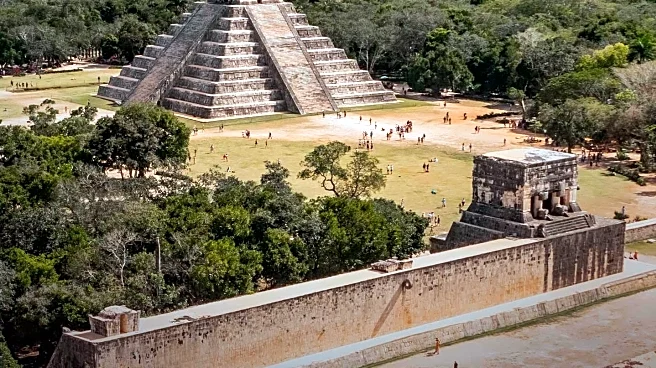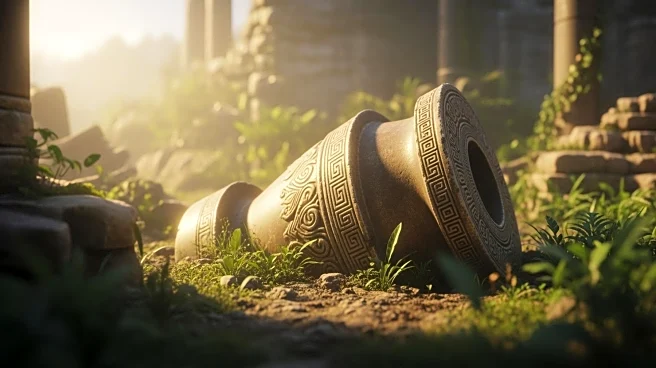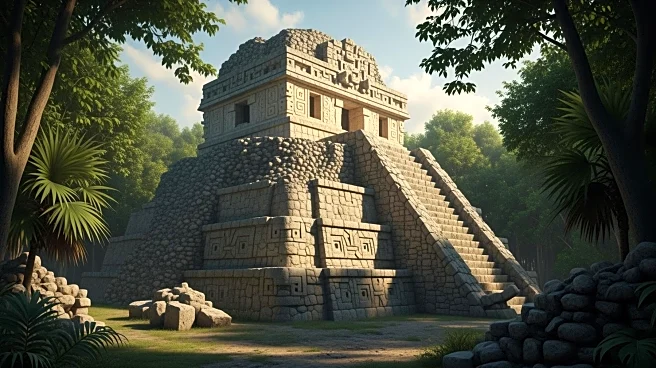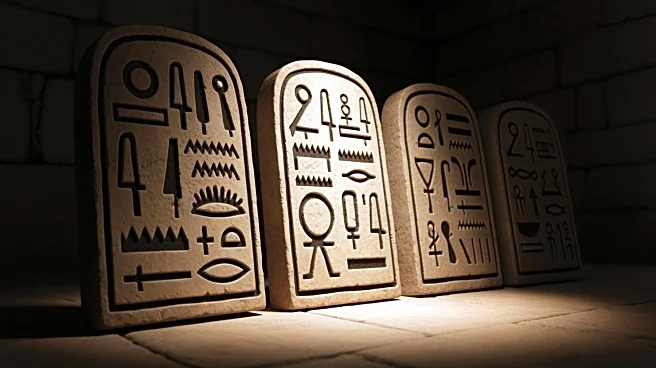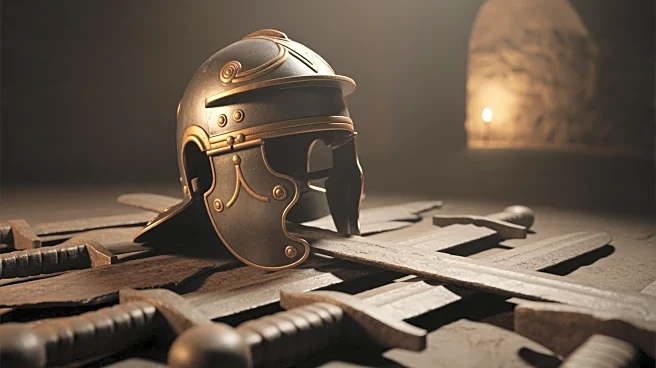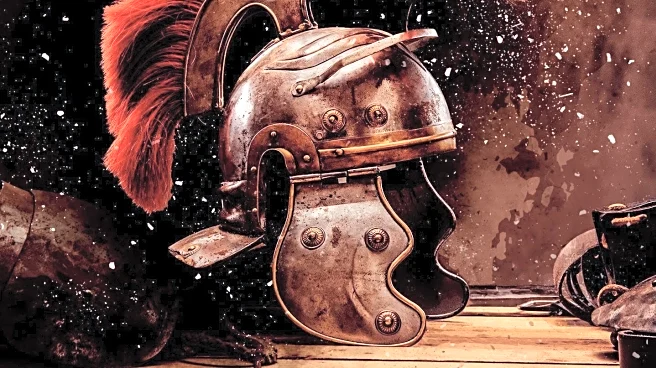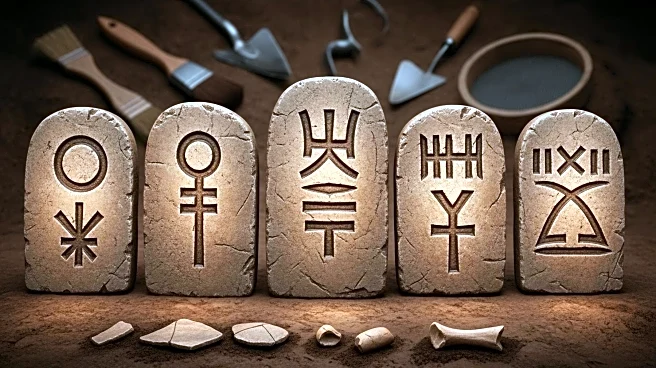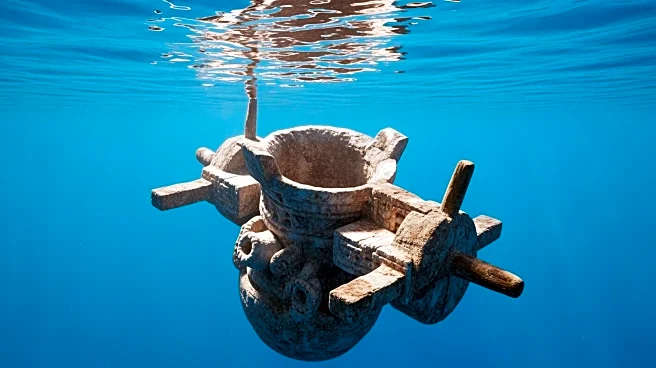What's Happening?
Archaeologists from Mexico’s National Institute of Anthropology and History have discovered a well-preserved ancient city on Guerrero’s Costa Chica, named Paso Temprano. This city, dating back over 1,200
years, provides a glimpse into the Epiclassic period of Mesoamerica. The site features defensive walls, ceremonial areas, and residential compounds, showcasing sophisticated urban planning and societal structure. The architecture, including a 49-meter-long ball court, suggests both practical and spiritual significance, indicating a complex social hierarchy.
Why It's Important?
The discovery of Paso Temprano is significant as it offers new insights into the cultural and historical development of ancient Mesoamerica. The site’s preservation allows researchers to study the social and political life of its inhabitants, potentially redefining the understanding of the region’s history. The architectural features suggest a complex society with a defined social hierarchy, providing a vivid snapshot of ancient societal structures. This discovery could lead to the identification of a local archaeological culture, enhancing knowledge of the Epiclassic and Early Postclassic periods.
What's Next?
Ongoing research at Paso Temprano aims to uncover more about the city’s origins and its role in ancient Guerrero. Archaeologists hope to learn about the original builders and their cultural connections. The site’s preservation offers a unique opportunity for further exploration, potentially revealing more about the region’s pre-Hispanic past. As excavation continues, new findings may provide deeper insights into the city’s mysterious history and its inhabitants.
